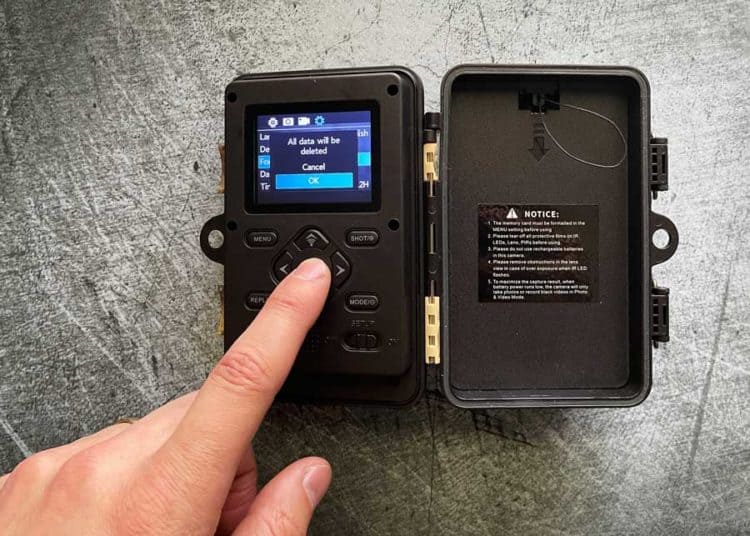Are Cellular Trail Cameras Worth It? 4 Key Benefits
Cellular trail cameras are the premium option for filming wildlife. Instead of having to retrieve your SD card from the camera, footage can be transmitted live to your phone as it is captured.
With the higher initial investment and ongoing costs, are cellular trail cameras worth it? Yes. These trail cameras earn their keep in 4 key ways: save time, save money, disrupt animals less, and get live footage for security.
Cellular trail cameras are great for hunters, wildlife enthusiasts, and homeowners using them for security.

Many outdoor enthusiasts are turning to cellular trail cameras to capture wildlife footage without having to be physically present. But are cellular trail cameras worth it? Let’s find out!
Are Cellular Trail Cameras Worth It?
What is a Cellular Trail Camera? Cellular trail cameras capture photos and videos with a motion-sensitive shutter. And transmit the footage via cellular networks and a data plan. They are used for home security, hunting, wildlife photography, and livestock protection.
Users can then view footage from their computer, cell phone, or other devices without needing to connect the SD card to a computer.
4 Benefits of Cellular Trail Cameras
If you’re wondering if a cellular trail camera is worth it, here are a few advantages to using a cellular trail camera instead of another device.
1. More Efficient (Save Time)
Cellular trail cameras can save you a considerable amount of both time and money, because you can get updates of animal (or human) activity on your piece of land. And don’t have to travel there to see what’s been happening.
This means you can sleep easy knowing that your property is safe. And enjoy watching the animal life at home by the fire.
2. Less Animal Disruption
Because cellular trail cameras cut down on unneeded trips to your plot, they also increase your stealth factor, an important element in capturing wildlife photography.
With less human noise and scent, animals will go about their routines undisturbed.
This is a huge advantage for hunters observing game habits and photographers trying to obtain sought-after creature candids. The ability to see where, when, and how wildlife inhabits and behaves in specific places increases your odds of a close encounter when you do make the trek out.
Using a cellular trail camera can reduce scaring deer and other wildlife when compared to traditional trail cameras.

3. Save Money
While cellular trail cameras cost more to purchase and also have monthly cell plans, they can also save you money.
By receiving footage via a data plan, you don’t have to spend the fuel or put the wear and tear on your vehicle to check your cameras. If you like to check your cameras regularly, a cellular camera can make a big difference.
With the price of gas, it isn’t hard to see how this can save considerable money each month.
4. Actually Be a Security Camera
While traditional trail cameras can be used for security, they are only good to see what happened after its over. Sometimes this will be days or weeks later.
But by receiving a live feed of realtime footage, you’ll know if someone is damaging or stealing from your property. Or if your livestock is at risk.
Also, by mounting your camera and leaving it for months, it will be easier to hide and your footprints and flattened grass will disappear. Less checking means less signals that someone has been around.
Ease of Use: Cellular trail cameras are also extremely useful for people who are not very tech-savvy.
Once you have the camera set up, it’s a simple matter of collecting the photos from the cloud and replacing batteries; no specialized skills are required!
Here’s more about programming a trail camera.

Getting a Cellular Trail Camera
Cellular trail cameras can range anywhere from inexpensive to upwards of $500 if you’re looking for special features and high resolution video. Another cost to know about is that they will also need periodic battery replacement.
Here are my picks for the best trail cameras.
Cellular trail cameras require a SIM card and cell signal – like your cell phone. This means in addition to the camera itself, you’ll need to buy access to that service. Average plans for a trail camera start around $10-$15 a month but can vary based on how much data you use, the number of cameras you’re connecting, and image quality.
Most cellular trail cameras work with a selected network like Verizon or AT&T to obtain a signal. Unlike Wi-Fi cameras, a popular choice for security in developed areas, trail cameras need cellular connectivity in more isolated locations (which can sometimes be a challenge).
This guide is part of our series on how to use a trail camera.
What about you?
You may find that the benefits of a cellular trail camera more than justify the cost. Whether you’re a hunter, photographer, or simply interested in learning more about the natural world, this type of trail camera is worth considering.
How are you planning on using your cellular trail camera? I would love to hear about it in the comments!







